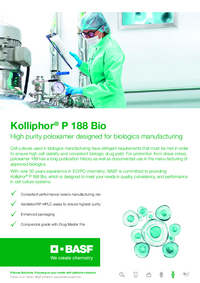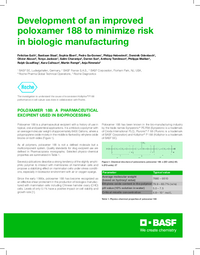A process of co-creation
BASF doesn’t take all the credit. It's only through a process of co-creation and constant dialogue with customers to discover their successes and pain points that the best results are achieved.
“One of the things we’ve been really diligent about is soliciting feedback from our customers,” Morale-Cummings says. “We’re trying to make it clear to them that we can be partners. You can come to us, tell us where you’re having issues, and we can go internally to make changes and improve your processes.”
She continues to say that it’s a partnership supported by the wealth of resources and experts at BASF versed in polymers and different chemistries. “By listening to customers, these experts can think about the chemistry and changes we can make to improve ingredients for an application which we can, in turn, test in the lab. We’ve been successful in making small changes to make an ingredient better. It all starts with listening to what the customer is having issues with.”
Butler adds that “we’re not doing this in a vacuum. We’re listening to the industry to make sure we’re doing the right thing.” Most of the innovation so far has been around the development of surfactants for shear protection.
Morales-Cummings shares Kolliphor P188 Bio as a specific example. “We’re developing new products that can serve processes that are more sensitive or demanding,” she says. “We expect to be sharing news soon.”
Developed with the environment in mind
There’s an environmental benefit to customization too. “By having a raw material ingredient that’s exactly what your process needs, there’s less waste,” says Morales-Cummings.
“In the case of biopharma, a lot of sustainability’s attention is on the upstream piece because you’re using so much water. If you have a raw material that’s not great, and you can’t finish your fermentation, you’re tossing liters of water away. By having a critical ingredient that’s the right fit for your processes, there’s less likelihood of them being a failure.”
BASF’s manufacturing sites are highly integrated to increase energy efficiency, minimize waste, and maximize raw material utilization, all of which help put BASF on course to reduce its CO2 emissions by 25% by 2030 and achieve net zero by 2050.











